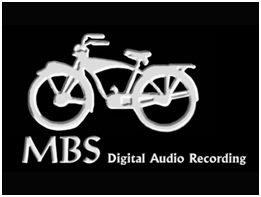 First, an explanation of the logo that is irrelevant to the topic…but it’s my blog and I want to do it anyway! I use that logo in my recording hobby. The bicycle is copied from the sole remaining 1949 business card from my father’s shop in Texarkana founded in that year…which is also the year of my birth. Dad was a perfectionist and grossly undercharged for the level of work he put into each and every job. He had an advanced (it would be even today) Foley automatic handsaw sharpener that would do a great job with a 5 minute setup. Not Dad. He’d spent 15 minutes checking every micro adjustment until his eyes, ears, and fingertips said all was perfection. It took maybe 5 minutes for the machine to do its thing. Then Dad would spend another 15 minutes re-setting teeth as he found unacceptable and even heating the saw to red-hot and quenching it to re-temper the steel like a blacksmith. For this, he charged the princely sum of 1.00.
First, an explanation of the logo that is irrelevant to the topic…but it’s my blog and I want to do it anyway! I use that logo in my recording hobby. The bicycle is copied from the sole remaining 1949 business card from my father’s shop in Texarkana founded in that year…which is also the year of my birth. Dad was a perfectionist and grossly undercharged for the level of work he put into each and every job. He had an advanced (it would be even today) Foley automatic handsaw sharpener that would do a great job with a 5 minute setup. Not Dad. He’d spent 15 minutes checking every micro adjustment until his eyes, ears, and fingertips said all was perfection. It took maybe 5 minutes for the machine to do its thing. Then Dad would spend another 15 minutes re-setting teeth as he found unacceptable and even heating the saw to red-hot and quenching it to re-temper the steel like a blacksmith. For this, he charged the princely sum of 1.00.
We almost starved to death while he always had a backlog of work.
So I named my “hobby” practice “MBS Digital Audio Recording, a wholly owned subsidiary of Mallett’s Bicycle Shop” in honor of the fact I’ve never charged at all except in a couple of cases where I had out-of-pocket expenses and always throw every effort into the job…just like Dad. It is, in fact, a tribute to his attitude of it being a privilege to work and do that work with one’s whole heart and mind, and in joy. Now, to the topic at hand: What happened to “high fidelity” and why do so few actually listen to music anymore?
Executive Summary
For those who aren’t interested in the support of my hypotheses, here’s the executive summary:
Millions spend 2k or more for a flat as a pancake TV picture that won’t fool my cat. These same folks shell out significant sums for surround sound systems. I took a look at Best Buy, not exactly an audiophile hotspot. They offered 345 home theater sound systems. I ordered them in best-selling order and found the first 150 contained a LOT of what would be more than decent, some even outstanding sounding systems. Few of these would excite the audiophile, but neither did Joe Sixpack’s Superscope reciever, Sansui speakers, and Garrard turntable back in the day. Many of these systems are much better than that.
But Joe Sixpack considers stereo obsolete. He’s getting kickass surround sound with his movies a few of which are actually realistic. Joe gets his music from downloads. There is no available surround download format, though it’s not hard to create one. Worse, the junk offered so far as multi-channel music is pretty much uniformly awful, muddy, and hardly convincing so an easy way to get it really wouldn’t help. Recording a 360 degree soundfield is not rocket science, but playing it back IS with current equipment, unless you are nerd, geek AND audiophile and willing to go through the trouble. Joe is none of those things, and until he can download and playback stuff on the equipment he has without any thought it isn’t going to happen.
I listen mainly to my LP collection. However, it’s only because there is no alternative. I still dream of truly realistic, immersive recordings that place me smack in the best seat in the house in a cathedral, a jazz performance, a thunderstorm, an opera, or a broadway play.
We HAVE the technology. Read on if you want to know more.
Prolog
I am adding this to an already too long blog entry in response to some comments from the audiophile community. I confess to being an “audiophile.” Public perception of the audiophile today is largely someone who throws more money than they have at equipment only they comprehend and that they fiercely guard from anyone’s grubby hands. I am a bit different in that, for me, it’s about the music. My own system is rather modest by REAL audiophile standards as I don’t get anal about anything that doesn’t intrude on the music. Several key components in my system are in excess of 40 years old, but they serve my needs nicely and I’ve no interest in “state of the art” just to be up with others.
Some pushback has come from the large, vocal “two channels is enough” niche. While I love these folks, it confounds me as to how they can be so happy with a medium that can in no way be described as “high fidelity.” Here is what the Oxford dictionary, my standard for such things, has to say:
noun: faithfulness to a person, cause, or belief, demonstrated by continuing loyalty and support: he sought only the strictest fidelity to justice.
1. sexual faithfulness to a spouse or partner. 2. the degree of exactness with which something is copied or reproduced: the 1949 recording provides reasonable fidelity
Of course, it’s “2” we are dealing with here, though the fanaticism of some of my brethren might make one wonder at times. More than one marriage has gone on the rocks over an audio system as audiophiles have become progressively viewed as eccentric and out of touch. However, that second definition is where the recording industry failed entirely and the niche of audiophiles, once the force that had significant influence on that industry, made themselves irrelevant both to that industry as well as the general public that once came to them for advice and counsel. Not all audiophiles are totally rigid about “stereo is the answer to all things musical.” Some have multi-channel systems that double as HT installations similar to, if differing in quality and cost of the componentry, those of most modern American homes. However, many of these still eschew use of these to play the generally feeble attempts of the music industry to provide real fidelity to recorded music. Part of this is the scars from the “quad” push from the 70s. While I can readily demonstrate theoretically and in practice that 4 channels provide the brain with every clue necessary to construct an accurate and faithful sound field, many continue to insist on 5 or more. In the basic modern 5.1 home theatre, the center front channel is designated by the industry as the “dialog” channel. Now, why my brethren insist on the need for a dialog channel in a piano recital or jazz recording is beyond my ability to comprehend. The presence of this channel is completely unnecessary to the achievement of fidelity in a sound recording and is useful only in movies where sound is supportive. In the best of those mixes, the dialog channel isn’t used when recreating a sound field like a battle scene or storm as it simply muddies up the brain. The “.1” is called a “bass management” or channel. In a high quality music system it is redundant in all but systems for pipe organ fanatics as only that instrument has really significant sound at those frequencies. However, modern movie sound tracks may have MUCH thunder, explosions, earthquake effects and such so this channel is considered essential to many. Even though my main loudspeakers extend nicely to 32 Hz, I confess to having a subwoofer in my system as the pipe organs I love have audio that goes as low as 16 Hz. But the main point I will attempt to make is that in location recording only 4 channels covering 360 degrees are useful, and that any bass management should be handled by hardware and not by messing with nature and confusing our poor brains. Aside from that, there is also a common belief in the audiophile community that there is one and only one “sweet spot” in a listening room. In many systems, there is truth in that. However, it is not necessary. For those readers who are lost on that, you may have had an experience with certain types of TV screens, especially projections that have a “viewing angle.” You notice it because the brightness drops off significantly if you get to a given angle. Many speakers do the same thing. However, well designed speakers either vintage or modern, have very wide angles of dispersion. While I show the listener in my discussion of how to correctly record and reproduce a sound field seated precisely in the center, it is not the only place where accuracy is achieved. In fact, a 4 channel sound field will have much wider areas for seating that of a stereo system even with speakers that don’t feature a wide sound dispersion.
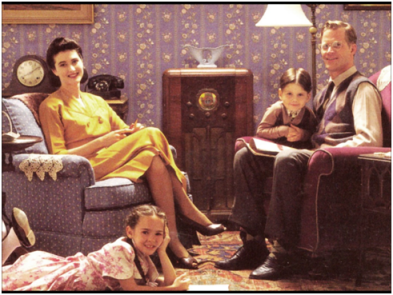
A typical 1940s home scene. Note that all have something else going besides listening. Radio was a social experience in a way that is not practical with television.
After Food, Shelter, and Security, there was Music
For untold eons, people gathered to sing, play instruments, dance and listen to music anytime they had after having simply survived the day. By the end of the 19th century most American homes had a piano, reed organ, fiddle, accordion, or other musical instrument and one or more who could play. Things began to change with Edison’s phonograph, which by the 1920s many blamed for the declining interest in learning to play an instrument. But it was really radio that changed the American evening. Yes, the phonograph had been around for several decades, but even the finest record players available to the well-heeled weren’t really “Hi-Fi” and records were expensive. While the records were very good and sound great when played back today with modern equipment, the technology to play them back in the home at “Joe Average” costs really wasn’t there. However, by the 1940s the average American home had a fine radio set that could sound as good as or better than the equipment used by many today. Live broadcasts from first class studios with microphones that have yet to be surpassed, armies of highly skilled engineers ensuring a pristine signal passed over “class A” telephone lines and through local radio stations equipped with the latest gear provided a better, cleaner audio than the vast majority of today’s mp3 compressed files. Families and friends gathered to listen to Glen Miller, Jack Benny, and socialize…something you can do with audio only that really doesn’t work with all eyes glued to a screen.
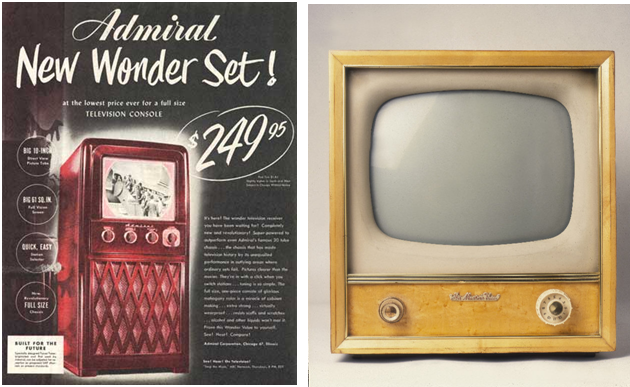
1948 model television. Note the size of the speaker grill compared to the picture tube. The one to the right is from about 5 years later. Where’d the speaker go? By the mid-1950s the speaker had not only shrunk to 4” or so, it was banished to the side on many sets. Who cared? Nobody “listened” to TV, they WATCHED it in total concentration.
The Television Transformation and the Birth of the “Audiophile”
From 1945 to 1955 television literally swept the nation and transformed it more rapidly than any other technology ever had. Neighborhood skies sported a forest of antennas and a walk down the street after dark meant seeing flickering lights of the TV set on the curtains in the family room.
Only a relatively small group of people still listened. They were hobbyists who used old radio parts to build high fidelity systems. A very competitive industry grew to support them, Radio Shack being one of the survivors of this period. By the mid-1950s the LP, or Long Play, 33-1/3 RPM record was introduced followed by stereo a few years later and spread rapidly. In every town and neighborhood, the local enthusiast’s home could be found brimming with friends and guests listening to everything from Frank Sinatra to steam locomotive recordings on often hand-built equipment. While TV was taking an increasing amount of time for everyone and the country’s main pastime, it was still far from the all-consuming focus it would become by the late 20th century. The advice of the Hi-Fi enthusiast was eagerly sought by everyone when they needed a new “record player.” By the early 60s, the makers of consumer equipment increasingly used “enthusiast” terms like “RMS Power,” “tweeter,” and “high fidelity” that had not been heard before.
An Uneasy Truce: TV and the Home Hi-Fi
By the early 1960s many average homes had an entertainment center with stereo sound far superior to the nasty TV sound of the day.
By the 70s, the country was virtually overrun with audio freaks as an ever-growing stream of low-cost, high quality amplifiers, speakers, turntables, and records flooded the market. There was a local “expert” on every block. I supported my own habit by letting friends and acquaintances know that I’d acquire, install, and configure their system for 50% of what I could save them over the best price they could locate on the system of their choice. As a “audiophile,” I knew the best mail order sources that, in the pre-internet days, were known only to readers of Audio, Stereo Review, High Fidelity, and the like. It was a really fun time and the mad money I made fueled my own habit. Weekend gatherings of “hippies turned working people” consisted of wine and reefers accompanied by Pink Floyd blasting out of very fine, low-cost systems. Even with color established as the norm, the 21” standard definition screen with its 4 inch monophonic speaker was no entertainment match for even the nearly ubiquitous low-end Pioneer receiver, Sansui speakers, and Garrard turntable with Shure cartridge belting out Sgt. Pepper’s, the Stones, Miles Davis, Charley Pride, or whatever. In the average home, it was considered impolite to leave the TV on when guests arrived.
Snatching Defeat from the Jaws of Victory
The fall began with small things. First, “quadraphonic,” a concept that appeared to be the “next big thing” in audio and promised an immersive experience in 3D sound that would perfectly reproduce the real world. Ouch. No less than four generally or totally incompatible, overpriced, and poorly conceived systems destroyed both audiophile and public enthusiasm in less than 5 years. Only “discrete” four channel systems worked well, and that system was only available via open reel recorders or through the RCA championed CD-4 LP format. All you needed was a new, expensive phono cartridge and perhaps a new turntable, a new quad preamplifier, a new quad amplifier, and two more speakers. The average American stayed away from the audio stores in droves and the audiophile crowd was not only disappointed in the sound but generally condemned the entire concept due to the disgust with the engineering of the recordings and the high cost and low quality of the equipment. Open reel was by far the best system for delivering the best sound quality in any format at the time, but the high cost of the machines and the pre-recorded material for them meant they never really influenced the consumer market. Further, the gimmicky nature of the four channel material of the day and the lack of understanding by recording engineers of how to take advantage of it never did anything for either the consumer or the enthusiast market. Perhaps the worst aspect of it all was that the failure of the commercial efforts in this area did for multi-channel surround sound what the Hindenburg disaster did for what was, in fact, a marvelous concept by discrediting the basic technology rather than the implementation.
TV Sound Becomes a Worthy Competitor
Then came the 80s, and the revised NTSC standard definition video system was introduced that provided wide range, stereophonic sound. All across America the TV replaced the turntable between the speakers in the home audio system and the turntable moved to the left or right. Soon the CD player replaced it altogether.
But, that wasn’t the end of the decline of listening as a pastime and social activity in the American home. The next blow was Dolby and DTS surround sound for the home. First heard by most in 1977 with the release of “Star Wars,” it was instantly in demand by consumers when it became available on DVD in 1995 and then became ubiquitous with the introduction of Dolby II sound from cable and broadcast channels in 1998.
But wait, there’s more…
Even the CD player stayed cold and silent as the turntable found its way to the trash or thrift store and the immersive, if gimmicky, Dolby surround experience and bigger screens came to dominate life in America. The big, full range speakers that had been the pride of so many Joe Average citizen became eyesores and little satellite speakers with subwoofers took the market. After all, the screen was the focal point and if the sound was mentioned at all it was whether or not the windows rattled with the laser cannon fire on “Star Wars.” Even those musically–challenged Bose speakers faded away as even more invisible sound bars became available. Sets of real, high fidelity loudspeakers now not only became curiosities but liabilities as making one appear to be well behind the times and out of touch.
The advent of downloading via Apple and other sources of MP3 and similar compressed music delivered a knockout blow that would be considered a war crime of unnecessary violence to a foe already totally defeated if it were a real war. Already desensitized to anything like high fidelity, this diet medium with up to 90% of the “music” removed to make it fit an IPods small and expensive storage space relegated listening to places and activities that not only were not social, but using ear buds or headphones that completely removed the experience from any interaction with other warm bodies.
Recently, it was announced that “Sound and Vision” magazine would merge with “Home Theater.” That is significant. “Sound and Vision” magazine is the successor to “Stereo Review, ” and Stereo Review was the successor to “Hi-Fi and Music Review.” That chain supports my history as related. I am a subscriber to both those magazines, so the upside is that I’ll save a bit of money. I read Sound and Vision and only skipped through Home Theater for the reasons I stated up front: I am not a “videophile” and while I’ll spend what it takes to have high fidelity sound, spending 5 times as much on an average modern TV of good brand and quality but still having only the equivalent of a “mono,” flat as a pancake, picture that still won’t fool my cat doesn’t appeal to me. My bias is to put my money where my ears are.
The remainder of this article focuses on my quest to “fool my cat.” I claim nothing unique about my experiments and others have succeeded to some degree in producing reasonably satisfying multichannel recordings using various approaches up to and including Dolby ProLogic II. However, other methodology relies on decades of experience, luck, good karma, and a variety of other things one may or may not have access to or possess and good results are very, very rare and impossible to find amongst all the bad results.
Anyone still reading after the above will likely be glad to hear I am about to get to the point. The rest of this piece involves a re-write of a paper I wrote some years ago after experimenting with surround sound to find out why the commercial music releases in the format were not gaining any traction either with music lovers or with anyone else. I’ve made every attempt to keep the technical and jargon to a minimum.
I’ve rarely met anyone who doesn’t appreciate the vibrant sounds of a morning alive with birds, breezes, a rushing stream, or experience of dozens of boots rhythmically hitting a wooden floor in a Texas hill country dance hall, or a fine choir in a great church. No matter how “High Definition” the video and even on a top of the line Dolby Pro Logic II surround sound system, it just never seems to produce the same effect. With 2 dimensional images like television I understand why the picture just doesn’t convince anyone…even my cat…that it’s real, but I set out to find out why this also seemed to be true for sound recordings. While I’ve yet to complete this research, what I’ve done to date offers at least a decent hypothesis.
“Acoustic Time/Space Event” and “Virtual Presence” Defined
I don’t know whether it’s been used before, but I came up with the concept of “acoustic time/space event” to specifically define live experiences such as listening to a symphony in a concert hall, a Texas swing band in a wooden floored dance hall, choirs and organs in a great cathedral, or setting in a forest setting near a babbling brook with birds singing all around. It is not the product of a mixing board or sound treated studio, and, while enjoyable musical experiences can be produced with these tools, an acoustic space/time event may only be recorded, not created. “Virtual Presence” is a term I use to define a recording that is capable of recreating an actual acoustic space/time event in a convincing way. An amateur with a pair of inexpensive PC soundcards and four identical microphones can follow these rules and achieve virtual presence when “experienced” audio engineers with half a million dollars’ worth of mixers and gear fail to do so. That is important, and empowering. Music acquisition and publishing has long been the playground of High Priests and deep pockets. With the failure of the large publishers to understand the trends in the culture, the mantle has fallen on the shoulders of “mom and pop” and garage studios to provide acoustic and classical material to a hungry 21rst century audiophile and music-loving class dissatisfied with the over engineered, over processed, and over compressed offerings of traditional studios. In fact, a recent NPR story suggests that many non-audiophile music lovers have begun to find the mp3 experience as not satisfying and are seeking higher fidelity in their two channel material. Thanks to the ineptness of the music industry, multichannel material remains something they don’t even think about. Only recordings that can be played back using the sources and components already available home theater systems and made in accordance with the concepts discussed here offer a chance to change that.
One of the advantages of being a highly critical consumer rather than a producer and not having access to a lot of money for an experiment is that one starts out with an open and clean mind and keeps it simple. None of the sophisticated and expensive equipment…or the baggage of the past…was available to me, so, I set out to experiment with virtual presence recording with what I could realistically obtain or put together. I had already demonstrated to my audiophile peers that simple, cleanly recorded, correctly imaged recordings of acoustic space/time events could energize and enthrall ears ranging from “golden-eared audiophiles ” to even the most jaded modern TV freak or IPod addict. Further, I’d become convinced that if the recording industry would simply use the technology we have at our disposal to provide recordings that could be played by the average person on the equipment they have available that there would be a new birth of music appreciation in this country. The explosion of multi-channel home theater systems is NOT the enemy, and in fact, represents a “stealth” weapon and a waiting resource for musicians if they will only take advantage of it. The remainder of this piece will deal with my own plan for achieving a musical “Pearl Harbor” in the middle of the American TV room and replacing re-runs of sitcoms with music, and if not returning music to the place it held in American life for the first 200 years of its existence at least giving it a place at the table again.
Six Steps to Achieving Virtual Presence
A majority of American living rooms have what is required to achieve some semblence of virtual presence with audio, and many have systems that could be startling and leave even the most “high-definition” TVs available in the dust when it comes to actually providing a realistic experience. Achieving virtual presence requires providing the human brain with precisely the information required to recreate the original sound field, no more, no less. Today, highly complex and sophisticated circuitry attempts to, and in some cases, succeeds in creating an involving, immersive, and sometimes even relatively accurate sound field. However, in most cases it fails, and fails miserably. Experience suggests that the reason for this is that modern circuitry, even at its best, is no match for the human brain. You just can’t fool Mother Nature.
Six Simple Steps to Virtual Presence
If you don’t follow one or more of these, just keep reading as I’ll go through them one at a time.
- Conventional “Stereo” is simply dual channel mono and is incapable of delivering Virtual Presence.
- To ensure basic “Virtual Presence,” 4 identical or correctly arrayed microphones must cover 360° with seamless overlap and be stored as completely separate channels.
- Mixing = editorializing, no matter how well it is done and greatly complicates or prevents the achievement of Virtual Presence.
- The simplest possible signal path from microphone to storage should be used.
- There should be a minimum delta from master to distribution copy and the ideal is none.
- Reproductive conditions must be as close as possible to the inverse of acquisition, and the ideal is to simply reverse the transducers.
1. Conventional “Stereo” is simply dual channel mono and is incapable of delivering Virtual Presence.
In recent years, home theater systems with their 5 or more channels have rapidly become ubiquitous. This has produced renewed interest in surround audio, though mainly for video sources. Many audiophiles reject anything beyond stereo as unnecessary and gimmicky. On the other hand, we heard exactly the same thing from their fathers and grandfathers when stereo debuted. Both they and their fathers/grandfathers were correct. Early stereo WAS gimmicky and full of “Hey! Listen to this!” Ping-Pong effects. In fact, it is not possible to record certain events with any degree of reality in only 2 channels. I have rarely ever used more than two microphones for stereo, and the most often asked question in the field was always “Why only two microphones?” My stock answer was always the same: “I have only two ears!” That answer was, and remains true, for simple 2-channel stereo recording of acoustic space/time events. However, it does not apply to “virtual presence” where 4 microphones are required. The reason that 2 microphones cannot provide a realistic sound field when 2 ears can is simple: while these microphones actually pickup sound in a way very similar to the human ear, the output is then sent to only two speakers. That includes the information that, if these “artificial ears” as microphones are were REAL ears, would be parsed by the human brain and interpreted as directionality. In the 1970’s, attempts were made to fix this with circuitry that in an attempt to mimic the brain’s processing of sound and send the directional information to rear speakers so the brain could have something more similar to an actual acoustic space/time event to work with. It started with a good idea, but went down hill from there.
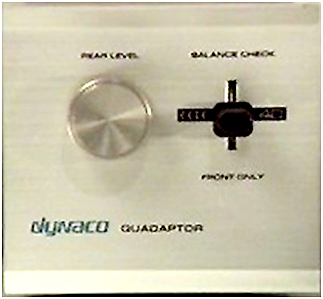
1970s DynaQuad adapter. Simple, effective and required only a couple of extra speakers. Best of all, it works with the records or CDs you already have.
The first, simplest, and possibly the best was David Hafler’s “DynaQuad” system, which used passive circuitry (unnecessary to get into the theory here) to extract out-of-phase information from normal stereo recording and route it to the rear. Occam’s Razor in action: The simplest approach is usually the best. At its best, the impact is marvelous, and I have Hafler circuitry in my stereo even today as it restores much depth and space to stereo sources, especially simple two microphone recordings of acoustic material. Soon, the hi-fi industry established seized on the concept as a potential “next big thing” and revenue stream and attempted to improve on it with logic circuitry to “enhance” it. You can’t really blame them for trying. However, there is a fundamental flaw in this approach when re-creating a “Virtual Presence” as true to the original sound field as possible: it is in no way comparable to the natural “Hafler circuitry” built into our brains. It not only didn’t help, but degraded the experience in most cases while alienating the customer with confusing choices. The point is this: Give your brain the data points it needs and let it do the work. Why spend money and time developing what we are already equipped with?
2. To achieve “virtual presence,” 4 identical microphones must cover 360°
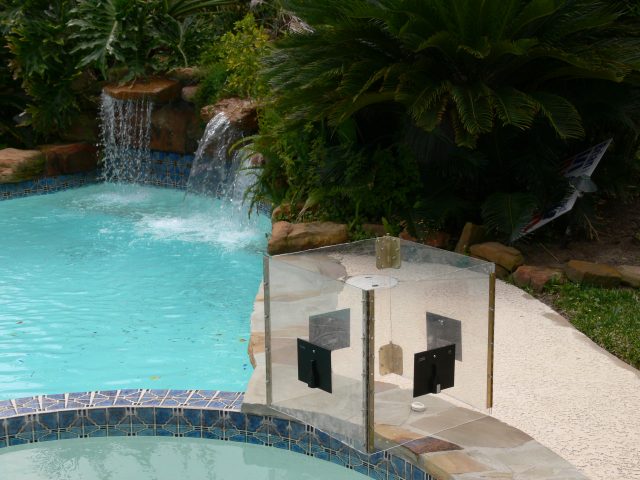
SoundCube being set up for ambient recording test. Played back, one should hear the soundfield just as if your head was where SoundCube was.
By placing 4 microphones in the “best seat in the house” you provide the brain with the data points it needs to triangulate the origination point of every sound in the acoustic space-time event in the same way it does in the real world. In order to test this concept, I developed the MBS SoundCube. The SoundCube is based on the Crown PZM (Pressure Zone Microphone) microphone. The PZM is the only microphone design, aside from the ribbon and the omnidirectional, to have a “natural” pickup pattern and has much in common with your ears. While many different microphones have been developed with a wide variety of pickup patterns, all of them rely on phase cancellation to achieve the desired performance. While effective for news people, moviemakers, and the CIA, they are not the best choice for virtual presence.
Of the 3 “natural” pickup patterns, I have experimented with ribbon microphones (figure of 8 pickup pattern) and the PZM (hemispherical pattern). The SoundCube is the result of my experiments with the PZM and the easiest to use in this explanation of Virtual Presence. The diagram at the left shows the natural 180° pickup pattern of the PZM. Omni’s and ribbon mikes pick up sound reflected from the walls, floors, and other objects in a room. For stereo, and with the mikes properly positioned, this doesn’t impact the recording too much. However, these out of phase signals impact the accuracy of the signal and confuse the extremely sensitive direction finding capabilities of the human brain. Further, it is extremely difficult to perfectly overlap conventional microphones such that the areas covered by each mike overlap perfectly to record surround sound. If the overlap is imperfect, the human brain will interpret this as spurious directional information and prevent the perception of virtual presence.
I developed SoundCube in an effort to address this issue. SoundCube consists of 4 square boundaries facing the 4 cardinal directions. Each square has a hole in the center for mounting a PZM microphone with a butterfly nut. This arrangement provides all the data points required by the human brain to recreate Virtual Presence with 4-180° zones with a 90° transition zone yielding the requisite seamless coverage.
Nothing in the above should be taken to suggest that only PZM microphones are capable of achieving Virtual Presence. I have achieved Virtual Presence with ribbon microphones, which are my personal favorite microphones for acoustic instruments and natural sounds. All audio engineers have their bias and preferences in microphones, and despite my personal dislike of phase-based directional microphones, it is possible to achieve virtual presence with them if they are properly deployed in accordance their design specifications and the above principles.
However, the use of PZMs in the SoundCube configuration reduces the highly complex task of microphone configuration and placement to that of simply locating the “best seat in the house” and placing the SoundCube there as a proxy for the listener.
3. Mixing=editorializing, no matter how well it is done and prevents the achievement of Virtual Presence.
As a media producer, I love great mixers. They do yeoman work in a wide variety of creative production and the world of production would not exist without them. However, in the quest for virtual presence and the preservation of acoustic space/time events, they have no place. For one thing, they violate one of the cardinal rules, that dealing with the simplest signal path being the best, but most importantly, they represent editorializing. What it means is that the audio engineer does not believe it possible to deliver a quality recording without tampering with the sound field. For virtual presence, this is never necessary. The mystery of microphone placement is reduced to simply finding the best seat in the house and putting the SoundCube or a properly configured 4 microphone array of another microphone type there. The brain will take care of the mix. A noted professional photographer once told me one of his secrets. “Leave the zoom alone. If you need to get closer to the subject, MOVE THE CAMERA.” The same is true for recording. You need to move the microphone(s) or the musicians if the mix is not correct instead of using a mixer to “fix” it. My basic rule is simply this: Put the microphones where your ears want to be.
4. The simplest possible signal path from microphone to storage must be used.
The mantra of many audiophiles is “The perfect preamplifier is a straight wire with gain.” While this goal is, at present, technologically unattainable, the criterion it represents is something all recording engineers should strive for. Modern audio processing circuitry is frightfully good, but every issue it seeks to address in the acquisition of acoustic music in fine environments can be eliminated by following the rules as stated so far. Therefore, only the essential paths should be followed: microphone to preamp, preamp to Analog to Digital (A-D) converter, thence to storage. Even modest microphones, preamps, and A-D converters used within this framework can provide a more satisfying virtual presence than 6 figures worth of gear passing through endless processes, mixing, and conversion.
Now, all you have to do is deliver it. Good luck with that!
5. There must be a minimum delta from master to distribution copy and the ideal is none.
At this point, we run into a bit of a problem. To date, every MBS recording I’ve made has been a master. That is, recorded either at the 16/44.1 resolution of CD to begin with or at exactly twice that rate so that reduction yielded no change in the data. Since no mixing, processing, or any other alterations of the original file takes place, each CD was identical to the original master. This is how it should be, and as such, exceeds even the legendary “direct to disk” LP’s of old in that the analog disk reproduction processes makes delivery of a master to the end-user impossible. However, virtual presence requires 4 discrete channels and a delivery medium. The ideal method would be to deliver the files as raw data, but few listeners have either the skills or the equipment to replay these. There are only three commercial delivery media with the potential to deliver virtual presence that are available to any significant numbers of people, SACD, DVD-A, and BluRay. Never heard of the first two? Don’t be surprised. These are wonderful formats, but the “big dogs” ensured failure by protecting and pricing them out of the range of the average producer and releasing material with the same bad engineering that ensured the failure of the original Quadraphonic format. I’ve read technical data that claims that both these formats can deliver separate channels discretely, but experimentation suggests this is not true. I used a couple of DVD-A mastering softwares to package my experiments and the results were simply not remotely as good as just playing the files as four discrete streams. No matter what they say, something is happening either in the packaging or the Dolby processing that is preventing the achievement of virtual presence. Of course, most have heard of and may own BluRay players for movies. The BluRay specification looks like a dream. You can have up to 8 channels of very high-resolution (24/96, or 4 times CD resolution) or 6 channels of the current maximum 24/192 resolution. Since only 4 are required for achieving virtual presence this seems like just the ticket. But, of course, the powers that be have everything so locked down legally so they don’t face competition from people like me. Yeah. Ol’ Dave and his buddies are a REAL threat to Sony, RCA, and such. One could sort of understand this protectionism if there were any real music business left, but with the world hooked on low resolution, compressed mp3s and other “diet” music and record stores shuttered all over the world just what is the point??? I suppose it boils down to “If we can’t have any fun, NOBODY gets to have fun.”
The good news is that the 1 bit, 2.8 or 5.6 MHz technology behind SACD is now becoming available to “mom and pop” at least for recording. My experiments with it suggest that mastering with this format produces a file that can be transcoded nearly transparently to any PCM format with no audible degradation. Finally, we have a universal format for high resolution digital. Now, if we just had a way to deliver it to YOU! We can only hope.
6. Reproductive conditions must be as close as possible to the inverse of acquisition and the ideal is to simply reverse the transducers.
The ideal playback is simply the inverse of the original 4 microphones. That is, four identical speakers equidistant from the listening point. Microphones are transducers. They turn sound into electricity. Loudspeakers are also transducers that turn electricity into sound. Therefore, the perfect listening situation to experience a recording made according the 6 Cardinal Rules is a simple reversal of the transducers. This will make sense if you consider putting a “dummy” head inside SoundCube, and then compare to the illustration of ideal playback and the location of the chair to the speakers.
The diagram at the left shows a reversal of the transducers, with 4 identical speakers facing towards the listener instead of four identical microphones facing away from the listener. If the principles have been followed so far, then a person sitting dead center in this array should have an uncanny sense of “Virtual Presence.” They are now positioned as if they had been at the original event sitting where the SoundCube was. In other words, a visual representation of rule number 6.
A couple of brief anecdotes from my first SoundCube experiments illustrate this phenomenon. I did some test recordings with the SoundCube on my front porch. During the recording, I went outside to check on something or the other and as I went out, the wind caught the front door and slammed it pretty hard. When I played the recording back on 4 identical Frazier Mark IV loudspeakers, the environment was very convincing and involving. Then the door slammed. I immediately jerked around and looked towards the door to see who had come in, as my brain was completely fooled and I fully expected to see someone entering the room. I did not realize what had really happened until I got up and verified that no one was present. I repeated this with several other people, and all behaved exactly as I did. I got a lot of laughs from this. More importantly, it proved the point: Realistic reproduction must be the inverse of the source recording: reverse the transducers.
The next experiment was similar, but while recording a helicopter flew over at fairly low altitude. During playback in my music room, when the helicopter flew over, my daughter (around 8 at the time) instinctively looked at the ceiling in a bit of confusion. I realized that she was experiencing a sonic “Holodeck,” and that the cieling simply wasn’t there in the virtual presence were were experiencing.
Virtual Presence in the Real World
These concepts have been applied to real world music only once to date, but the results were and remain extraordinary. In 2001 I built a specialized PC capable of handling 4 channels of sound at extreme resolution using the best available (Card Deluxe) sound cards. I am going to hold the specifications on this thing for an “Addenda” as I don’t want to lose anyone who has made it this far with jargon. Suffice it to say I could find nothing on the web to indicate anyone was doing this. Through friends on the Klipsch audio forum, I was able to contact the manager of the Asylum Street Spankers. ASS was, and is, an Austin group with a very devoted following and a huge fan base in Japan and Europe. No way to describe their genre, but the main thing is that these folks are so rabidly acoustic they won’t even use a public address system or vocal microphone. Not a single thing they play or use has any electric component of any kind. The manager agreed to let me make an experimental recording with my system so my best friend Ron Heubner and I loaded up my van and headed to Austin and the Saxon Street Pub.
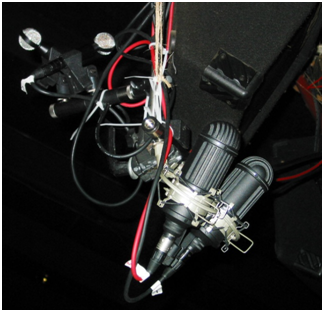
Setup for virtual presence capture using ribbon microphones, two matched Oktavas and a pair of Beyers.
It took a couple of hours to rig the microphones, run cables, setup the PCs, ensure safety, and test everything. When I say PCs, I mean I ran both the highly experiment 4 channel machine and a second, more conventional, PC recording lower resolution, but still higher than CD, with only 2 channels. We call this an “alibi” machine so if there is failure of one you still have something to fall back on. Given the way ahead of the curve nature of the 4 channel machine, this was very good sense. There was an SRO crowd with quite a few not allowed in due to capacity restrictions. This was the Spankers first Austin appearance after their Japan tour so the home crowd was out in force. I took some pushback from the Saxon owner who had not been informed of our activities, but he mellowed out when he realized we were not taking up even a square foot of his precious revenue space.
Upon returning home I played the recording back on the same setup as I’d used for the outside ambiance experiments. The results were far more than I’d expected. Eyes closed or open, the sound field was totally convincing with the audience spread behind. Clinking beer bottles and conversations came from all sides. Shouted comments from the audience were precisely locatable and the band was perfectly imaged where they belonged. I had never, nor have I since, heard anything like it. No matter how much you may think you don’t appreciate high fidelity, I can assure you that you’d respond to recordings like this and for evermore accept no substitutes. If there is a downside, it would be that your IPod would join your turntable in the garage.
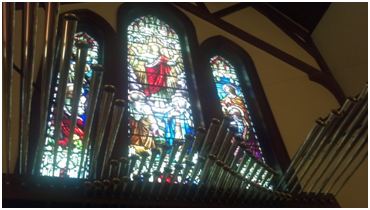
Antiphonal organ on church rear wall. This sound should come from behind the listener just as in the real world.
CONCLUSION
Consider the pipe organ. The space housing the instrument is very much a part of it. A pipe organ sitting out in the open would not sound very good at all, nor does a fine instrument housed in a poor space. The amount and manner of the return reverberation of the sound is very much a part of the overall experience. Four microphones producing 4 discrete channels of information from a single point, preferably the best seat in the house, are required to approximate the experience. This is even more important for antiphonal instruments. Recordings where the source of the music in the actual acoustic space/time event isn’t the same cannot be described as “high fidelity” regardless of how good they sound. Of course, the same is true of live performances, environmental recordings, and many other sources. Doesn’t the idea of hearing audience noise emanate from the performers strike you as, well, wrong? Are they applauding for themselves, sitting in the middle of the band, or what? The enjoyment of such recordings is a learned experience, much like the “realism” of the flat-as-a-pancake video and film we enjoy even though it won’t fool my cat.
Here is one more example before closing. Many environmental recordings have been made over the years, and sold quite a few copies. However, the public appetite gradually faded. This is not because people do not want to experience the ambiance of the beach, forest at night, or a Texas thunderstorm up close and personal, but because of the two-dimensional nature of stereo. Today’s home theater systems are ideal for this, and the recording concepts discussed here provide the perfect perspective to experience these natural symphonies. A truly immersive sound field would be a wonderful aid to sleep, meditation, or de-stressing if reproduced as accurately as our technology allows and our brains require!
It has been demonstrated that profound deafness brings on much greater depression than blindness. While it may seem counter-intuitive, it illustrates the incredible sophistication we’ve developed in the processing and interpretation of sound in the human brain and its importance to our survival. In the 19th century, live music permeated every aspect of life and a far greater percentage of average people played an instrument or sang daily. By the 1940s, the average American spent 5 hours a day listening to the radio. Radio delivered 3D, full color images to the mind in ways no flat picture of any resolution can do. A TV with the sound turned off delivers almost nothing. The TV was, however, a shiny new object that appeared to offer more, a picture. A flat, fuzzy, monochrome picture but it moved and captured the attention! Like the CD, and the mp3, it appeared to be a big leap. When TV first appeared, the home radio featured a very large speaker and fine audio circuitry that delivered very good sound quality. 10 years later and the home TV featured a big, blurry screen with a 4 inch speaker. The technology to deliver a full 3 dimensional image to the home is still a distant dream, but the technology to deliver a 360◦ sound field than can immerse and astound has been with us for decades…if we will just use it.
The techniques for achieving this are not only not rocket science, even a “Dave” can figure it out and do it. When you listen to music or sounds recording using the principles of virtual presence, you close your eyes and find yourself in another time, and another place with uncanny accuracy. It is my firm belief that if engineers set their sights on using the available technology to accurately recreate all the wonderful acoustic space/time events that surround us, there would be a new birth of interest in the wonderful ears we are blessed with.
EPILOG: Pushback
Seems my little ramble on my observations of audio over my lifetime sparked a bit of discussion over at Audioholics. Kewl. Debate is a good thing. However, so is diversity. One thing that appeared constant in my detractors was limited musical interests. I suspect many of these fine folk limit themselves to certain genres which, in turn, define their concept of “success” in a listening experience. I am a huge fan of Pink Floyd, but wouldn’t really miss not hearing a live performance of “Dark Side of the Moon” because that album did not originate as an acoustic space/time event and the experience would not be as intended. Some argue that my 2 channel setup is not “pure” in that I have rear speakers fed by a vintage Hafler DynaQuad. I beg to differ in that the DynaQuad simply routes pre-existing information to where it originated. It can be very inaccurate…though often still engaging…on recordings like “Dark Side” that have a lot of mixing and therefore out of phase information. However, on very pure 2 channel material like vintage Mercury Living Presence or similar two mike recordings from any source it does a very nice job of re-routing the sound field to a much more realistic and satisfying level. Dr. George Mims, one of the world’s great living organists and owner of perhaps the most discriminating pair of ears I’ve ever known commented on a recording of him playing the magnificent Schoenstein pipe organ at the acoustically incredible St. Martin’s Church in Houston in my listening room to the effect that “It sounds a lot like the church.” That, my friends, is fidelity.
I’ve excerpted a few of these comments and added my response. Feel free to fire up and flame away…I enjoy a good audio rumble! Which is why I have a subwoofer good to 16hz.
Way long, and full of BS. These are the good old days for audio. The equipment, especially speakers and subwoofers, are better than ever, awesome electronics are available at very reasonable cost, CD quality or better music is available with point and click ordering or downloading, and the choices in the market for everything are so numerous it can be bewildering. All of that blather about 4-channel audio is BS too. Quad sucked. Great stereo is where the sweet spot is.
As to “Way too long” one must say that anything is too long if you aren’t enjoying it. Most of Schoenberg’s composition’s are way too long to suit me. However, it’s a personal blog and I enjoyed writing it. This one was interesting in that the general comment of “…full of BS” is then supported by a series of statements that echo pretty much precisely some of my arguments. My own system contains modern components that cost far less and perform far better than those of the past. The age of my loudspeakers averages 40 years and some of them I paid almost nothing for. As to the choices in music being “bewildering” here again we are in total agreement. “Quad sucked…” Certainly no argument from me on that as I stated clearly in the blog entry. Perhaps this person is arguing that stereo is good enough. We’d certainly disagree there as I made the point and supported it that it is not possible for two channels to accurately reproduce an acoustic space/time event. If one listens only to music that is created in a studio it’s OK, since there is no space involved there. However, even then many of us miss a sense of space and depth. But those of us with wide tastes yearn for walls and ceiling to melt away when listening as in an acoustic “holodeck.” A place one can close one’s eyes and be somewhere else effortlessly, and be startled by sounds or reflections emanating from behind or above. THAT is fidelity. No crime in having limited musical tastes, but to attempt to apply them to the rest of us isn’t right. I have a number of audiophile friends who have limited tastes, but the one thing that, IMHO, truly defines them as audiophiles is that they will appreciate fine recordings of music they would never listen to at home.
Speaking of the “sweet spot”, the real failing of stereo is there’s on sweet spot exactly between the speakers along a relatively short perpendicular line extending from the speakers to the listener. The same failing is multiplied by 4 in 4 channel quad, and the sweet spot then becomes truly a “spot” dead center between them. It’s only at that single location were all 4 phantom images actually work. Move off it, and the phantom images cluster about the nearest speaker.
5.1 (or greater) largely solves the front phantom image problem, and extends the sweet spot all over a much larger area by anchoring the center with a speaker instead of a phantom. The early stereo experiments at Bell Labs concluded that the minimum channel count for “stereo” was three, all in front, with a center channel. Quad broke the rules in 4 directions. 5.1 solves the problem by not only anchoring the center, but re-defining what’s happening in “surround”. 11.2 fills in the remaining missing phantom locations with height and width channels. I’d agree that the 4 channel mic captures a 360 degree circle, but it can’t be directly reproduced in more than a single seat. The spacing between the mics will enhance the spaciousness of the recording, but make phantom image location completely intensity dependent apart from time delay. There have been other attempts at this, the Soundfield mic comes to mind, which ignored interchannel time differential by making the mic elements virtually coincident, but had the advantage of being controllable in post with a matrix. I can’t get on board with Quad in any form, sorry. Got to be 5.0 or greater.
This one was much more thoughtful, but contains much mythology that is demonstrably not true. Correct configuration as I described provides twice the “sweet spot” of 2 channel by the most obvious means of having two more channels. It’s both predictable from simple reasoning and I found it true in fact in my experiments. Further, there is more non-sweet spot seating that is still more involving that that provided by 2 channel systems. Of course, it changes perspective in the same sense that moving about in a real space does. With a very large listening room one could produce a lot of “good” seats. As to the center, dialog channel I continue to be baffled as to why anyone would consider it useful in music. It’s only a crutch for rooms or speakers that can’t provide a good 2 channel image. Until recently my listening room was set up for switching between pure 2 channel and 5.1. When playing mono material I had more than one experienced audiophile flatly deny that the center speaker wasn’t working to the extent of getting up and putting their ears on it. The center of a properly set up 2 channel system is not “phantom” but quite real and a mono source should appear to come from dead center. To the extent it does not the system is not accurate. Touting Bell labs sounds good, and their experiments were truly groundbreaking, but it was very, very early and they should be forgiven for filling a center “hole” the easy way and not knowing all we do now about correct microphone placement during recording and ensuring that the transducers are replicated properly.
Wow, I didn’t know I had this much to say! I guess I can summarize, what killed HiFi wasn’t the lack of quadrophonic sound, snake oil, or greed so much as Madonna and Michael Jackson and the big businesses that promoted them.
Excerpt from a much longer response that was largely filled with truth…but incomplete. One of the reasons my own discussion of this subject went on so long was that the issue is very complex and so many things contributed to the decline.
The definition of Hi Fi is the reproduction of sound with minimal distortion. In the article toward the end the author states that a recording is not “Hi Fi”. This, to me, destroys his credibility. Per definition, if there is no or minimal noise then it’s hi fi. Maybe his equipment is faulty or he does not understand/know the definition of “Hi Fi”
Admittedly, I didn’t give a lot of thought that others might define it differently, so I’ll do so now starting with the following quotation from the Oxford Dictionary.
Fidelity: late Middle English: from Old French fidelite or Latin fidelitas, from fidelis ‘faithful’, from fides ‘faith’.
As the use of “fidelity” in audio is really something of a stretch, I suppose it perfectly OK to define it as one desires. I would argue that my use of it is more “faithful” to the root of the word than simply implying low distortion. What I mean be “high fidelity” is faithfulness to the original acoustic space/time event. By that definition, neither single channel nor 2 channel recordings can be referred to as being as “hi-fi” as a correctly made and reproduced 4 channel recording as half the information required simply isn’t present or emanates from the wrong direction.
I disagree with the author’s almost complete dismissal of stereo for “virtual presence”. One does NOT need 4 channel or surround audio to enjoy music. I’ve played in several bands over the years and have seen hundreds of bands perform live. In every single case, 100% of the audio when at a live performance came from in front of me. Why should it be any different at home? The vast majority of music is recorded in stereo, mixed in stereo, and sounds great through a pair of decent speakers. Surround sound is fine for movies, but not required for music.
Hmm… If I “completely dismissed” 2 channel audio it is, indeed, a flaw in my work. I listen to a LOT of monophonic recordings, mostly 78 originals. My tastes in music run from Chinese classical music to barbershop. No boundaries other than great music, expertly performed, and recorded as best as whatever the available technology allowed. My favorite recording of “Rhapsody in Blue” is a badly worn acoustic recording with the Paul Whiteman orchestra and George at the piano. I listen to almost no multi-channel recordings because they pretty uniformly SUCK. Somehow, I appear to have buried the lead in the second part of my piece. Well, I never claimed to be a great writer! However, I do claim to be a pretty accomplished audiophile who really needs far better material before I am going to mistake “real” from “Memorex.” That is NEVER going to happen with 2 channels because it simply isn’t possible.

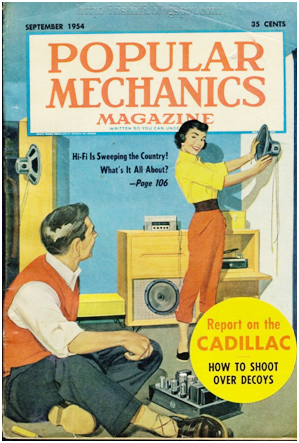
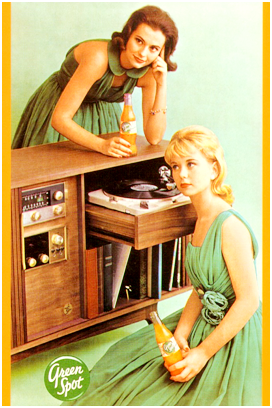
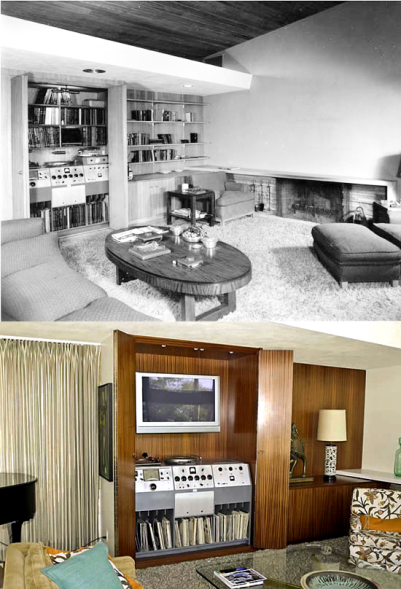

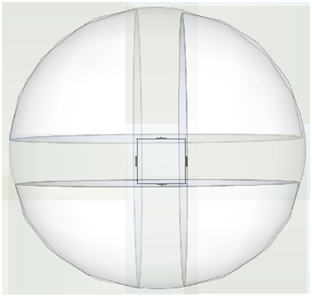
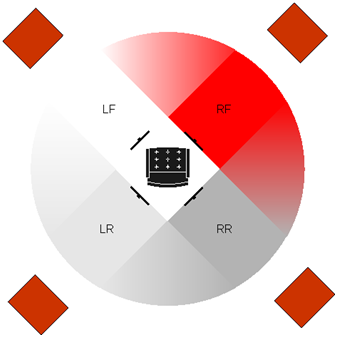
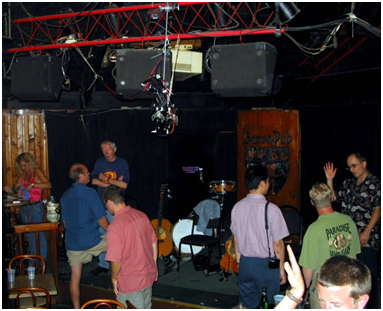
The depth and breadth of David’s perspective, lateral thinking and golden ears have informed this piece. I have been exposed to beautiful music and rich recordings to which I would not otherwise have been privy. It has been my honor and pleasure to witness this evolution / revolution over near two decades and I look forward to a future filled with world exploration and location recordings. Kecia
@Kecia Blush…
Pingback: Whatever happened to Hi-Fi?
Nice piece, Dave.
Dave,
I came across your blog via your post on Stereophile.com. I couldn’t agree more with most of your piece, with the exception of placing the blame on the engineers. I make a living as an audio engineer. Also being an audiophile, the state of the music industry and the current delivery mediums are a constant frustration of mine. At this point in my career I’m lucky enough to be able to work with the best of the best as far as equipment goes. The technology at our disposal today for recording and reproducing sound is mind blowing, yet the quality of the final product that the mass-market consumer actually hears has gone backwards. The fact that the industry standard is still two channel stereo is disheartening. The trends of modern production techniques designed for the current crummy playback devices is even worse.
I started my career in the rock genre. Though this isn’t typically the realm of the audiophile, I still strive with every rock record I engineer to create the most accurate picture of the essence of the band performing live. This approach has netted me some loyal clients, but also closed me off from a good chunk of the industry. That’s another topic though. When I was starting my career I was struck by how much better the early rock records sounded than what we were making at the time. The raw honesty, the sense of space, the emotion. I know most people feel the same way. The irony of this is that every piece of the recording chain from the microphone on is orders of magnitude better now than it was then. The techniques were better then though. They didn’t have unlimited recording channels. They didn’t have digital reverbs. They didn’t have Protools for editing. What you recorded is what you got, so you better do it right.
I spent many years trying to perfect my recording techniques to create a real sense of space. I was inspired by the early Led Zeppelin records, specifically the sound of the drums. It would blow most young engineers minds to learn that Bonzo’s drums were often recorded with only two microphones. In a world where every drum is closed mic’d this seems completely inadequate, but it works wonders. Instead of trying to make a drum set sound balanced by mixing and then creating a sense of space with a reverb, they put a good sounding kit with a good player in a good room. It’s a magical thing to hear. I’ve tried hundreds of approaches to get the sound of “being there” on my recordings, especially now that I work more in the jazz and acoustics genres. A-B pairs, Blumlein (X-Y) pairs, more mics, less mics. I believe the best approach is the mid-side technique. You use a figure of eight mic like a ribbon turned sideways as well as a direct mic facing forwards as close to each other as possible. You hard pan the figure of eight mic left, hard pan the inverse of it’s signal right and run the directional mic straight up the middle. It is the best sense of space I’ve tried for 2 channel (and thankfully mono compatible as well), but it just can’t quite recreate the sound of being in the room. I started looking to more channels as the answer and like yourself, I was amazed with the results.
The technology to deliver discrete, multi-channel recordings to the consumer are well in place. Many American homes have multi-channel playback equipment. Unfortunately this has been the realm of cinema, not music with the exception of DSD/SACD. The problem with DSD is that it is proprietary. The only means of creating a discrete multi-channel DSD recording is the Sequoia workstation. It is expensive and falls short of most modern workstations editing capabilities so it is a hard sell to most studios. Also, SACD was limited to analog only output from the players until recently because of copy protection fears. With HDMI you can now output DSD directly, but few receivers/processors support this. Of the ones that do almost all of them convert it to PCM, negating the sonic benefits of DSD. Because of this and its dismal market penetration, I also consider multi-channel SACD to be impractical.
Some of the other consumer surround formats are much more practical. The industry standard AC-3, a.k.a. Dolby Digital, is compromised for the sake storage space and transmission bandwidth. Formats like DTS offer much more capability though. The DTS you hear on the average DVD may not seem great fidelity wise, but this is often because the bit rate is reduced to save room for other audio tracks on the disk. DVDs are required to have an AC-3 track, so the DTS track is often compromised. However, at the full 1509.75 kbit/s bit rate DTS can offer CD quality sound on 6 discrete channels. It can also be stored on a typical CD and played back on any CD/DVD player with a digital output (remember DTS music discs?). Almost any surround receiver made in the last 15 years can decode the signal. The software to author these discs is relatively inexpensive too at $250 direct from DTS. I’ve done several recordings this way for my own consumption and the results have been fantastic. Looking forward, BluRay and it’s support for high bit-rate multi-channel PCM as well as lossless codecs from Dolby and DTS offer even better capabilities. There’s a problem though.
I can walk into a studio or a venue right now and make a killer 4-channel recording with 4 mics similar to the way you have but with even better quality. I can record it with almost transparent pre-amps into totally transparent A/D converters at 24-bit 192 kHz resolution. I can reproduce it in its raw, purist form on a Blu-Ray disc that will play in many consumers homes on their current equipment. I can down-convert it to the legacy DTS format that can be played on even more equipment. I can do all this with the laptop I’m typing on right now without it breaking a sweat. The problem is, who’s going to buy it?
The mass-market consumer, which is 99% of the music buying public, wants the convenient download to play on their iPod. They don’t buy music on discs anymore. The format isn’t the only issue though. I can easily make a 4-channel PCM (i.e. .wav) file that they could download. With many modern computers having HDMI outputs, they could easily play it on their home-theater receiver. The problem is that they don’t care about listening at home. That being said the situation with the mass-market consumers versus audiophiles is no different than the same mass-market consumers buying cheap, horrible sounding home systems in the 80’s and 90’s. However, the same two channel recordings could play on a cheap system just as easily as they played on a high end system. That’s not the case with multi-channel in a two channel music world. These type of recordings aren’t targeted to mass-market consumer anyway though, so what is the problem?
Two words: Stereo and history. Audiophiles are the consumers for these types of recordings. Unfortunately, it was established long ago by the high-end press that high quality playback in the home means two speakers. No more, no less. Anything more is a mere novelty and therefore must be a compromised experience. Even with the technology sitting in our hands for years, how many high-end multi-channel pre-amps do you see on the market? How about high-end multi-channel D/A converters? The ones that are out there don’t sell well and those that do sell are usually sold to videophiles. Many more products have come and gone over the last decade for the same reason. Few bought them. The audiophile market is well entrenched in two channel playback. Being that they are the consumers for this type of recording, that has to change for any progress to be made.
The engineers have tried and failed many times. Quad tried 40 years ago and failed. DTS music discs, multi-channel SACD and DVD-Audio have failed. Why? You could make an argument for the lack of a universal standard for Quad being the cause of it’s demise, but the other attempts have been pretty solid. The current Blu-Ray technology is the best solution yet but it is getting nowhere in the music market. The problem is that the audiophile market is too entrenched. 60 years of stereo being the standard gives an audiophile the confidence to spend big money on high quality stereo playback equipment. The audiophile publications support this. The standards for equipment in this market are high. Cheap consumer grade multi-channel equipment isn’t going to meet those standards and one isn’t likely to buy high-end equipment for an unproven format. It’s a seemingly unbreakable cycle.
I would love to make awesome, multi-channel music recordings that could really take you to the best seat in the house. Most of the engineers I know would too. We can do it right now. We have the technology to make them. Many consumers have the technology to play them. The consumers that have this technology won’t buy them though. The consumers who would buy it don’t own equipment that’s up to their standards to play them and aren’t likely to buy that equipment. The audiophile community has been a niche market for decades and few companies last long in it. The multi-channel audiophile market is a niche within a niche. I am in that niche personally, but I also have a family and a mortgage so I’ll keep trying to make the best two channel recordings I can because they pay the bills. I hope that changes one day, but after 60 years of stereo I’m not holding my breath.
JJ, sounds like two peas in a pod. I certainly defer to your experience and loved everything you said. I know that there are recording engineers who are capable but whose raw material is compromised by any number of issues between their raw tracks and the listener. I mentioned that BluRay sounded promising, but like you said about it and DSD, the powers that be are so fearful people will make cassettes 🙂 of their stuff they keep it away from mom and pop, garages and such. It works. The stuff isn’t copied because there is hardly anything to copy…
I still maintain the failure of quad was twofold: Total format and hardware chaos and poor performance from any one except for R2R, and a lack of understanding by engineers on how to record “virtual pretense.” The former is, in my opinion, the greater culprit. I remember the SQ album that excited me most. It was a recording of 4 brass choirs. However, in stereo it was just a big brass band and in quad it was an indistinct mist of music all around.
But you hit on my main point: Physical media is DEAD. Long live the download! As a computer programmer, I know that developing a single file of 4 (or more) discrete channels would not be a big deal.
I agree that the audiophile community has withdrawn into the 2 channel bunker. It’s cost us such influence as we had on the public and industry as well. But many of us want to listen to MUSIC, not be guinea pigs. The bunker can be opened with the write diplomacy of real music, reproduced in all it’s “you are there” glory.
Love your ribbon mike plan and will give it a try at some point. I am a simple guy with no budget, so I do the least expensive thing that works for me.
Thanks for your long and thoughtful response. It is for people like you I “troll” as my stated goal is to LEARN, not to teach.
I would REALLY like your comments on my post “A Funny Thing Happened on the Way to the Future” which deals more specifically with the issues of the CD era. Specifically, your take on the wav file that is available for download from that post as example. It was done with a couple of thousand dollars worth of equipment. Give it HELL…
Great reading for the masses. and I agree.